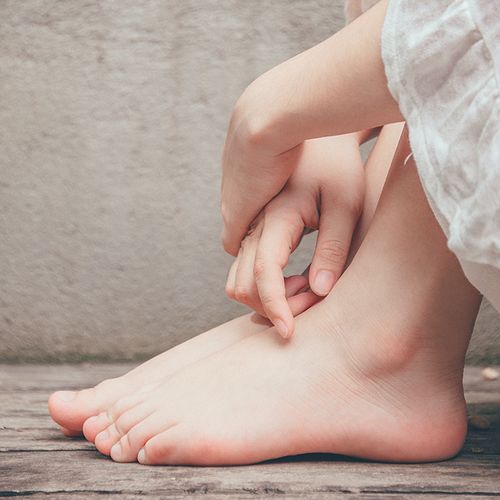High blood pressure increases your risk not only for heart attack, heart failure and stroke, but also for grave maladies that you may never have considered, such as kidney failure, dementia, aneurysm, blindness and osteoporosis.
Medications help reduce blood pressure...but their nasty side effects can include joint pain, headache, weakness, dizziness, heart palpitations, coughing, asthma, constipation, diarrhea, insomnia, depression and erectile dysfunction!
Vitamin C Can Reduce Blood Pressure
In a recent study, about 500 milligrams (mg) of vitamin C taken daily for eight weeks reduced systolic pressure-the more important top number-by 3.84 Hg...and by 4.85 Hg in patients with hypertension. The dose is well below the daily limit of 2,000 mg.
Now there's a promising alternative therapy that's completely risk-free-and costs nothing. This easy-to-use therapy is "tapping," which is based on the principles of Chinese medicine. Here's how it works…
Something Old, Something New
The tapping method is used by Ann Marie Chiasson, MD, of the Arizona Center for Integrative Medicine. For her own patients with high blood pressure, Dr. Chiasson has adapted a tapping technique that is part of the ancient Chinese practice called qigong.
Qigong involves simple movements, including tapping on the body's meridians, or "highways" of energy movement. These meridians are the same as those used during acupuncture and acupressure treatments. According to a review of nine studies published in The Journal of Alternative and Complementary Medicine, qigong reduced systolic blood pressure (the top number) by an average of 17 points and diastolic blood pressure (the bottom number) by an average of 10 points. Those are big reductions! In fact, they are comparable to the reductions achieved with drugs-but the qigong had no unwanted side effects.
Though Dr. Chiasson has not conducted a clinical trial on her tapping protocol, she has observed reductions in blood pressure among her patients who practice tapping. The technique she recommends also could conceivably benefit people who do not have high blood pressure if it reduces stress and thus helps lower the risk of developing high blood pressure.
Tap Away
Some tapping routines are complicated, involving tapping the top of the head, around the eyes, side of the hand and under the nose, chin and/or arms. But Dr. Chiasson's technique is a simpler toe-and-torso method that is quite easy to learn. It is safe and can be done in the privacy of your own home-so if it might help you, why not give it a try?
First, you may want to get a blood pressure reading so you can do a comparison later on. If the tapping technique is helpful, you eventually may be able to reduce or even discontinue your high blood pressure drugs (of course, for safety's sake, you should not stop taking any drugs without first talking to your doctor about it).
Dr. Chiasson's plan: Each day, do five minutes of toe tapping instructions below)...five minutes of belly tapping and five minutes of chest tapping. You may experience tingling or a sensation of warmth in the part of the body being tapped and/or in your hands, which is normal. You can listen to rhythmic music during your tapping if you like. As you tap, try to think as little as possible, Dr. Chiasson said-just focus on your body, tapping and breath.
Rate: For each tapping location, aim for a rate of about one to two taps per second.
- Toe tapping. Lie flat on your back on the bed or floor. Keeping your whole body relaxed, quickly rotate your legs inward and outward from the hips (like windshield wipers), tapping the sides of your big toes together with each inward rotation. Tap as softly or as vigorously as you like.
- Belly tapping. Stand with your feet a little wider than shoulder-width apart. Staying relaxed, gently bounce up and down by slightly bending your knees. At the same time, tap softly with gently closed fists on the area below your belly button and above your pubic bone. Try to synchronize your movements to give one tap per knee bend.
- Chest tapping. Sit or stand comfortably. Using your fingertips, open hands or gently closed fists, tap all over your chest area, including the armpits. Tap as softly or as vigorously as you like without pushing past your comfort level.
Cautions: If you are recovering from hip or knee surgery, skip the toe tapping (which might strain your joint) and do only the belly tapping and chest tapping. If you are pregnant, stick with just the chest tapping-lying on your back during toe tapping could reduce blood flow to the fetus...and tapping on your belly may not feel comfortable and could stimulate the acupressure points used to induce labor, Dr. Chiasson said.
Follow-up: Continue your tapping routine for eight weeks, then get another blood pressure reading to see whether your numbers have improved. If they have-or if you simply enjoy the relaxing effects of the tapping—you might want to continue indefinitely.
